Stellen Sie sich vor, Sie betreten einen Raum, der sich wirklich wie Ihr eigener anfühlt, in dem jedes Detail Ihren Charakter widerspiegelt und Ihren Lebensstil unterstützt. Das ist das Versprechen im Herzen von allem rund um Innenarchitektur. In diesem unverzichtbaren Leitfaden für 2025 entdecken Sie nicht nur die Prinzipien hinter schönen Innenräumen, sondern auch die neuesten Trends und umsetzbare Schritte, um Räume zu schaffen, die für Sie funktionieren.
Egal, ob Sie Hausbesitzer, angehender Designer oder einfach leidenschaftlich an großartigem Design interessiert sind – dieser Leitfaden wurde entwickelt, um Sie mit Wissen und Inspiration zu stärken. Machen Sie sich bereit, die Entwicklung der Innenarchitektur, grundlegende Konzepte, aktuelle Stile, den kompletten Designprozess, wichtige Werkzeuge und Experteneinblicke für Ihr nächstes Projekt zu erkunden.
Die Entwicklung der Innenarchitektur: Von der Vergangenheit bis zur Gegenwart
Innenarchitektur hat stets widergespiegelt, wie Menschen leben, arbeiten und sich ausdrücken. Um alles rund um Innenarchitektur wirklich zu verstehen, ist es wichtig nachzuvollziehen, wie sich das Feld entwickelt hat, geprägt von kulturellen Veränderungen, Technologie und visionären Schöpfern.
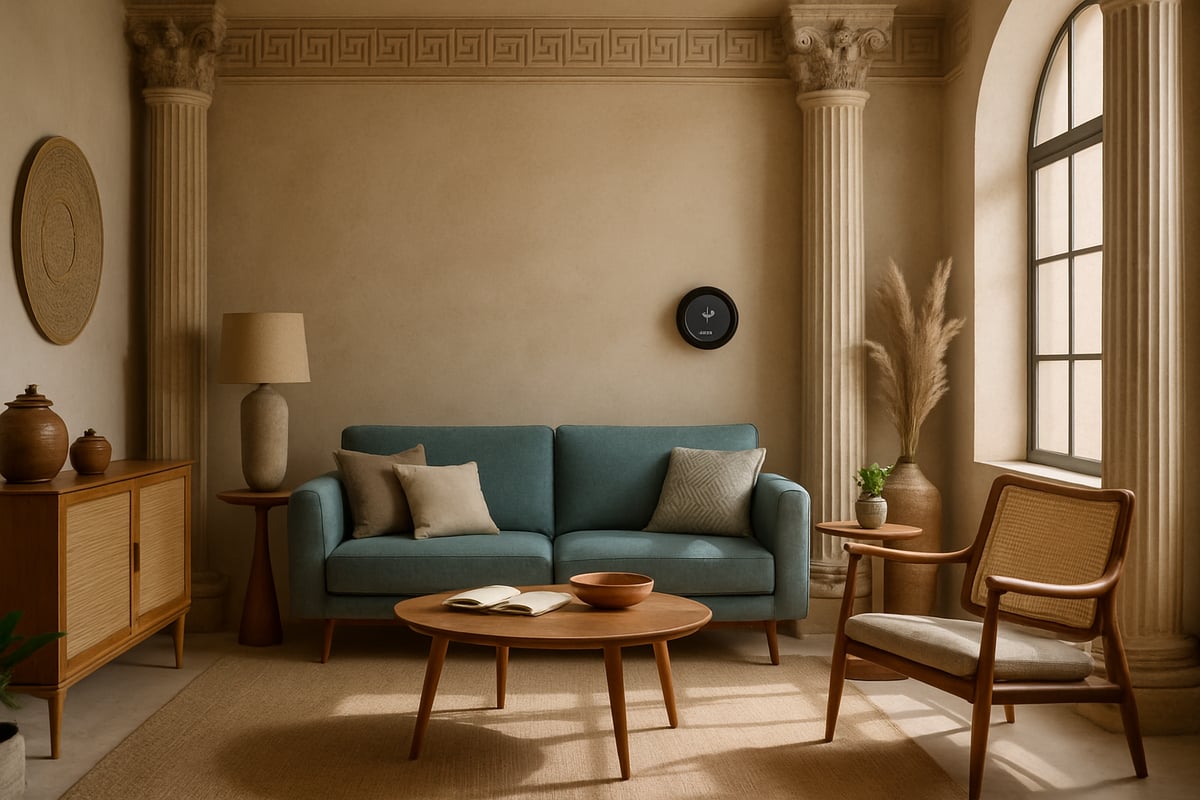
Die historischen Wurzeln der Innenarchitektur verstehen
Die Ursprünge der Innenarchitektur reichen bis zu den antiken Zivilisationen zurück. Die Ägypter verwendeten kräftige Farben und symbolische Motive zur Dekoration von Palästen und Gräbern, während die Griechen Symmetrie und Proportion in ihre Innenräume einführten. Die Römer bauten auf diesen Ideen auf und fügten Mosaike und luxuriöse Materialien hinzu.
Während der Renaissance blühten Kunst und Architektur auf und brachten filigrane Details und Harmonie in die Häuser. Die viktorianische Ära hingegen bevorzugte prunkvolle Möbel, schwere Textilien und gemusterte Tapeten. Diese Epochen legten den Grundstein für das, was in der modernen Welt alles rund um Innenarchitektur werden sollte.
Wichtige Bewegungen, die heutige Innenräume prägen
Im zwanzigsten Jahrhundert prägten mehrere bedeutende Designbewegungen unser Raumverständnis neu. Mid-Century Modern betonte klare Linien und organische Formen, während skandinavisches Design Einfachheit, Licht und Funktionalität in den Vordergrund stellte. Später entstand der Minimalismus, der sich auf entrümpelte Räume und zielgerichtetes Design konzentrierte.
Postmoderne und zeitgenössische Stile stellten traditionelle Regeln in Frage und förderten mutige Statements und verspielte Kombinationen. Kürzlich ist die Bewegung hin zu Nachhaltigkeit und Umweltbewusstsein zentral für alles rund um Innenarchitektur geworden, da Designer natürliche Materialien und Energieeffizienz priorisieren.
Innenarchitektur im digitalen Zeitalter
Das digitale Zeitalter hat alles rund um Innenarchitektur revolutioniert. Fortschrittliche Visualisierungstools wie 3D-Modellierungssoftware befähigen Designer, mit Layouts und Oberflächen zu experimentieren, bevor physische Veränderungen vorgenommen werden. Kunden und Fachleute verbinden sich jetzt mühelos über Online-Plattformen, was die Zusammenarbeit vereinfacht.
Virtual-Reality- und Augmented-Reality-Technologien ermöglichen immersive Vorschauen von Räumen und machen den Designprozess interaktiv und zugänglich. Diese Fortschritte sorgen dafür, dass sich alles rund um Innenarchitektur weiterhin an die Bedürfnisse einer technikaffinen Generation anpasst.
Wichtige Meilensteine und Einflussnehmer
Ikonische Designer haben im Laufe der Geschichte Branchenstandards gesetzt. Le Corbusier brachte modernistische Prinzipien in Wohnräume und setzte sich für offene Grundrisse und funktionale Formen ein. Zaha Hadids futuristische Gebäude führten fließende Geometrie und Innovation ein und inspirierten eine neue Welle der Kreativität.
Bedeutende Projekte wie die Bauhaus-Schule und der Barcelona-Pavillon beeinflussen weiterhin, was wir heute unter Innenraumgestaltung verstehen. Diese Pioniere haben bleibende Spuren hinterlassen und gezeigt, wie visionäres Denken die gebaute Umwelt neu definieren kann.
Daten & Trends
Der globale Markt für Innenraumgestaltung hat ein unglaubliches Wachstum erlebt, erreichte 2023 über 150 Milliarden US-Dollar und wächst weiter. Laut Interior Design Market Valued at $180 Billion ist die Verbrauchernachfrage nach personalisierten und funktionalen Räumen so hoch wie nie zuvor.
Der Anstieg der Telearbeit hat zu einem Boom im Home-Office-Design geführt, wobei fast 70 Prozent der Hausbesitzer Verbesserungen für Produktivität und Komfort suchen. Diese Trends zeigen, wie sich die Innenraumgestaltung an wirtschaftliche und Lebensstilveränderungen anpasst.
Die sich wandelnde Rolle des Innenarchitekten
Der heutige Innenarchitekt ist weit mehr als ein Dekorateur. Die Rolle umfasst nun Projektmanagement, technisches Fachwissen und die Zusammenarbeit mit Architekten, Ingenieuren und Kunden. Ein umfassender Ansatz in der Innenraumgestaltung bedeutet, Technologie, Nachhaltigkeit und Wohlbefinden zu verstehen.
Designer müssen ihre Fähigkeiten anpassen, über Branchenstandards informiert bleiben und Kunden durch komplexe Entscheidungen führen. Diese Entwicklung sorgt dafür, dass die Innenraumgestaltung dynamisch bleibt und auf die sich wandelnden Bedürfnisse der Welt reagiert.
Kernprinzipien der Innenraumgestaltung
Das Verständnis der Kernprinzipien ist für jeden, der sich für Innenraumgestaltung interessiert, unerlässlich. Diese grundlegenden Elemente formen schöne, funktionale Räume und helfen dabei, Ideen in die Realität umzusetzen. Ob Hausbesitzer oder angehender Designer – die Beherrschung dieser Prinzipien stellt sicher, dass jedes Projekt harmonisch und praktisch ist.
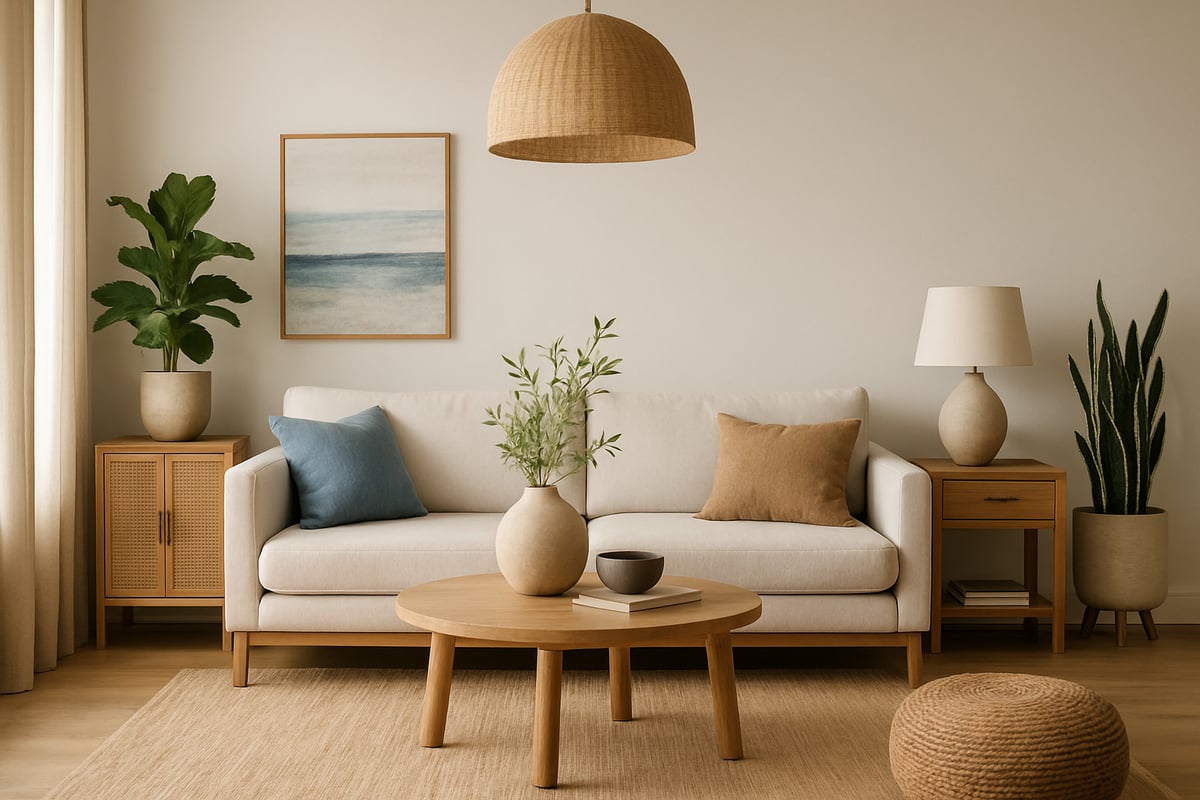
Balance, Harmonie und Rhythmus
Balance verleiht einem Raum Stabilität und visuelle Ruhe. Im Bereich der Innenraumgestaltung gibt es zwei Hauptformen der Balance: symmetrisch und asymmetrisch. Symmetrische Balance, wie passende Sofas auf beiden Seiten eines Kamins, schafft eine formelle Atmosphäre. Asymmetrische Balance, durch unterschiedliche Formen oder Größen, erzeugt eine entspanntere Stimmung.
Harmonie verbindet alle Elemente in einem Raum und sorgt dafür, dass Farben, Texturen und Muster harmonisch zusammenwirken. Rhythmus bringt Bewegung ins Spiel und führt das Auge sanft von einem Blickfang zum nächsten. Die Wiederholung von Formen oder Farben, wie das Echo eines Teppichmusters in Kissen, sorgt für einen subtilen Fluss. Diese Prinzipien sind entscheidend für einen Raum, der einheitlich und zugleich dynamisch wirkt.
Maßstab, Proportion und Raumplanung
Die Auswahl von Möbeln, die zum Maßstab des Raums passen, ist ein Kennzeichen von all about interior designing. Überdimensionierte Stücke in einem kleinen Raum können überwältigend wirken, während winzige Möbel in einem großen Raum verloren erscheinen. Proportion sorgt dafür, dass jedes Element gut zu seiner Umgebung passt.
Effektive Raumplanung ordnet Möbel so an, dass Bewegung und Zugänglichkeit erleichtert werden. Offene Wohnkonzepte, die 2025 beliebt sind, fördern flexible Grundrisse, während abgegrenzte Bereiche Privatsphäre bieten können. Das richtige Gleichgewicht zwischen Komfort und Nutzen wird durch die Beachtung von Maßstab und Proportion erreicht.
Farbtheorie und Psychologie
Farbe ist ein mächtiges Werkzeug in all about interior designing und beeinflusst direkt Stimmung und Wahrnehmung. Warme Töne wie Terrakotta oder Ocker wecken Energie, während Blau- und Grüntöne Ruhe vermitteln. 2025 sind Erdtöne, beruhigende Blautöne und kräftige Akzentfarben im Trend.
Farbpsychologie hilft, die Stimmung für jeden Raum zu bestimmen. Zum Beispiel sind sanfte Grüntöne ideal für Schlafzimmer, da sie Ruhe fördern, während lebhafte Gelbtöne Kreativität in Arbeitsbereichen anregen können. Eine durchdachte Farbpalette schafft eine einladende, ausgewogene Atmosphäre im ganzen Zuhause.
Textur, Muster und Materialauswahl
Die Kombination von Texturen und Mustern verleiht jedem Raum Tiefe und Charakter. In all about interior designing schafft die Mischung aus glatten Oberflächen wie Glas oder Metall und taktilen Stoffen wie Wolle oder Leinen visuelles Interesse. Muster, ob geometrisch oder organisch, fügen Persönlichkeit und Rhythmus hinzu.
Auch die Materialwahl ist wichtig. Nachhaltige Hölzer, recycelte Metalle und Naturfasern sind 2025 beliebt und spiegeln sowohl Stil als auch Umweltbewusstsein wider. Das Schichten dieser Elemente führt zu Innenräumen, die reichhaltig und ansprechend wirken, ohne überwältigend zu sein.
Grundlagen des Lichtdesigns
Beleuchtung ist ein Grundpfeiler von all about interior designing und beeinflusst sowohl Funktion als auch Stimmung. Geschichtete Beleuchtung kombiniert Umgebungs-, Arbeits- und Akzentlichtquellen, um jedem Bedarf gerecht zu werden. Beispielsweise sorgen Deckenleuchten für allgemeine Helligkeit, während Leselampen und Unterbauleuchten gezielte Beleuchtung bieten.
Intelligente Beleuchtungssysteme und energieeffiziente Glühbirnen werden immer häufiger eingesetzt und ermöglichen anpassbare Einstellungen sowie einen geringeren Energieverbrauch. Durchdachtes Lichtdesign hebt nicht nur architektonische Merkmale hervor, sondern sorgt auch den ganzen Tag über für Komfort.
Funktionalität und Flexibilität
Moderne Lebensstile verlangen nach anpassungsfähigen Räumen. In all about interior designing sind multifunktionale Räume und flexible Grundrisse entscheidend. Ein Gästezimmer, das gleichzeitig als Homeoffice dient, oder ein modulares Sofa, das sich für verschiedene Anlässe umgestalten lässt, veranschaulichen dieses Prinzip.
Design für Flexibilität stellt sicher, dass Innenräume praktisch bleiben, während sich die Bedürfnisse entwickeln. Aufbewahrungslösungen, wandelbare Möbel und anpassbare Zonen helfen, die Nutzbarkeit zu maximieren, ohne Stil oder Komfort zu opfern.
Nachhaltigkeit und Wohlbefinden im Design
Heutige Innenräume legen Wert auf Gesundheit und Umweltverantwortung. Die Verwendung umweltfreundlicher Materialien wie Bambusböden oder Farben mit niedrigem VOC-Gehalt unterstützt sowohl Nachhaltigkeit als auch Wohlbefinden. Biophiles Design, das Pflanzen und natürliche Elemente einbezieht, verbessert die Luftqualität und das Wohlbefinden.
Die Umsetzung dieser Prinzipien schafft Räume, die sowohl Menschen als auch den Planeten fördern. Für alle, die ihr Verständnis dieser Konzepte vertiefen möchten, bieten Online-Kurse im Innendesign umfassende Bildung zu Nachhaltigkeit, Wellness und den Grundlagen von all about interior designing.
Top-Innendesign-Stile und Trends für 2025
Die Welt der Innenräume entwickelt sich schnell weiter, und das Verständnis der neuesten Stile ist für alle, die all about interior designing lernen möchten, unerlässlich. Im Jahr 2025 betonen Designtrends Authentizität, Funktionalität und eine tiefe Verbindung zu Technologie und Natur. Lassen Sie uns die einflussreichsten Stile erkunden, die in diesem Jahr Räume prägen.
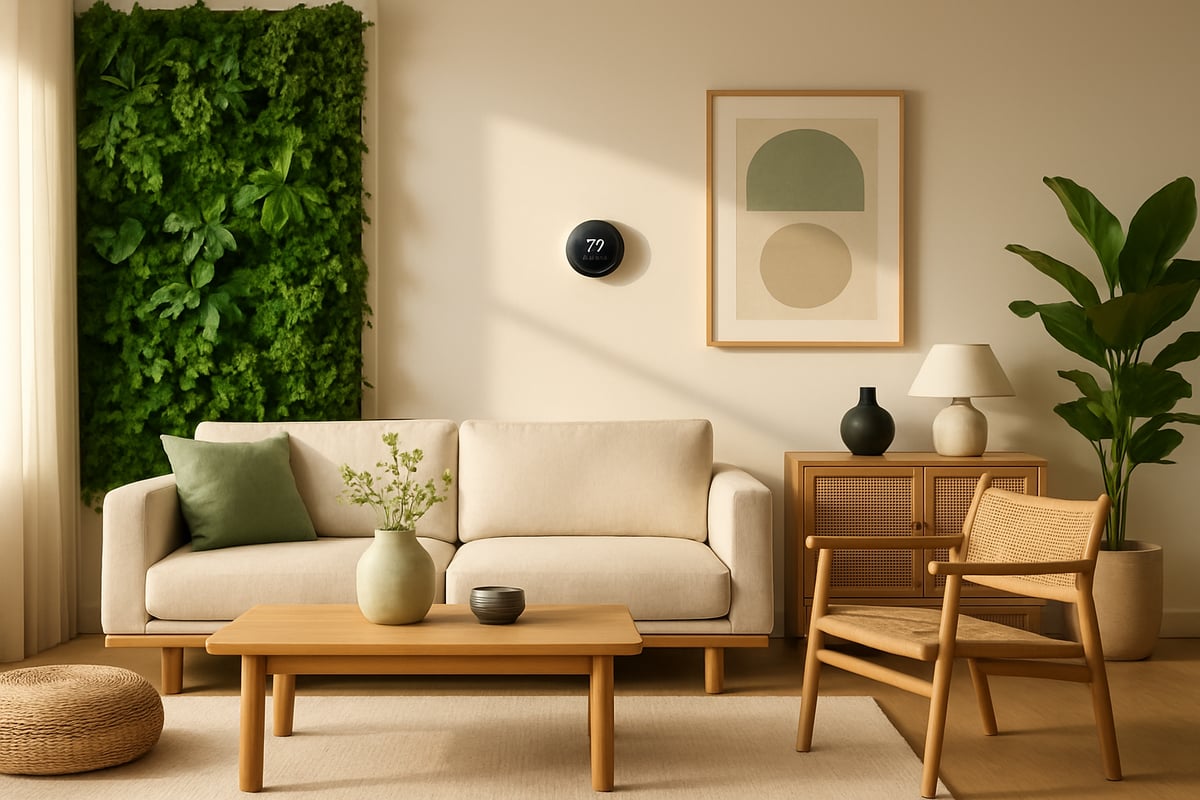
Moderner Minimalismus und Japandi
Moderner Minimalismus und Japandi stehen 2025 im Mittelpunkt von all about interior designing. Diese Stile setzen auf klare Linien, aufgeräumte Räume und eine harmonische Verbindung skandinavischer Schlichtheit mit japanischer Wärme.
Wichtige Merkmale umfassen:
- Neutrale Farbpaletten und natürliche Materialien
- Funktionale Möbel mit schlanken Silhouetten
- Minimale Verzierung
Beispielsweise zeigen städtische Wohnungen heute oft offene Grundrisse mit hellen Holzböden, Leinenstoffen und markanten Keramiken. Der Einfluss von Japandi zeigt sich in der Wahl von niedrigem Sitzmobiliar und dezenten Grüntönen. Wenn Sie ein Gefühl von Ruhe und Ordnung einfangen möchten, ist dieser Trend eine ausgezeichnete Grundlage für all about interior designing.
Biophiles und nachhaltiges Design
Biophiles und nachhaltiges Design definiert neu, was es bedeutet, all about interior designing zu kennen. Der Fokus liegt darauf, die Natur durch lebende Wände, Innengärten und reichlich Tageslicht in Innenräume zu integrieren. Organische Materialien wie Bambus, Rattan und Kork sind besonders beliebt.
Laut Houzz legen 70 % der Hausbesitzer heute Wert auf umweltfreundliche Innenräume. Designer setzen auf recycelte Oberflächen, energieeffiziente Beleuchtung und schadstofffreie Oberflächen. Für alle, die nachhaltige Produkte suchen, bietet die Kollektion Nachhaltige und umweltfreundliche Innenräume eine kuratierte Auswahl an biophilen Designelementen.
Indem die Natur in jede Ecke eingewoben wird, fördert dieser Trend das Wohlbefinden und passt perfekt zum Kern von all about interior designing.
Maximalismus und kühne Personalisierung
Maximalismus erlebt ein Comeback und lädt alle, die sich für all about interior designing begeistern, dazu ein, Individualität zu leben. Dieser Trend feiert lebendige Farben, geschichtete Muster und eklektische Dekoration.
Wie erreicht man diesen Look?
- Kombinieren Sie auffällige Tapeten mit farbenfrohen Polstern
- Präsentieren Sie kuratierte Kollektionen und persönliche Erinnerungsstücke
- Kombinieren Sie Vintage-Funde mit zeitgenössischen Stücken
Eine Fallstudie: Eine Wohnzimmertransformation mit juwelenfarbenen Wänden, gemusterten Teppichen und einer Galerie mit Familienkunst. Das Ergebnis ist ein Raum, der sich einzigartig expressiv anfühlt und die Geschichte des Besitzers widerspiegelt. Für alle, die Regeln brechen wollen, ist Maximalismus ein zentraler Aspekt der Inneneinrichtung.
Smarte Häuser und Technologieintegration
Technologie steht 2025 im Mittelpunkt der Inneneinrichtung. Smarte Häuser verfügen über automatisierte Beleuchtung, Klimakontrolle und sprachaktivierte Assistenten. Integrierte IoT-Systeme ermöglichen eine nahtlose Steuerung von allem, von Sicherheit bis Unterhaltung.
Beliebte Innovationen umfassen:
- Intelligente Thermostate und Energiemonitoring
- Sprachgesteuerte Beleuchtung und Fensterrollos
- Kabellose Ladestationen, die in Möbel integriert sind
Zum Beispiel könnte eine moderne Küche intelligente Geräte und adaptive Beleuchtung bieten, die sich an die Tageszeit anpasst. Da Häuser immer vernetzter werden, ist technologiegetriebenes Design ein wesentlicher Bestandteil der Inneneinrichtung.
Vintage-Revival und gemischte Epochen
Der Vintage-Revival fördert das Verschmelzen von Epochen, ein Konzept, das im Zentrum der Inneneinrichtung steht. Designer integrieren Antiquitäten, upgecycelte Schätze und Retro-Motive neben modernen Möbeln.
Wichtige Strategien umfassen:
- Kombination von Stühlen im Mid-Century-Stil mit zeitgenössischen Tischen
- Restaurierung klassischer Leuchten
- Verwendung von recyceltem Holz für Akzentwände
Upcycling gewinnt an Beliebtheit, reduziert Abfall und verleiht Charakter. Dieser Ansatz führt zu Räumen, die zeitlos und vielschichtig wirken und zeigen, dass Inneneinrichtung ebenso sehr Geschichtenerzählen wie Stil ist.
Globale und kulturelle Einflüsse
Globale und kulturelle Einflüsse sind für alle, die alles über Inneneinrichtung wissen wollen, von entscheidender Bedeutung. Designer lassen sich von mediterranen, afrikanischen und asiatischen Ästhetiken inspirieren.
Möglichkeiten, diesen Trend zu integrieren:
- Welttextilien wie marokkanische Teppiche oder indische Blockdrucke verwenden
- Handwerkliche Keramik oder afrikanische Masken präsentieren
- Kulturelle Motive mit modernen Layouts verbinden
Diese Fusion schafft Innenräume, die reich an Textur und Erzählung sind, verbindet Hausbesitzer mit einer größeren Welt und macht alles über Innenarchitektur zu einer Entdeckungsreise.
Farb- und Materialprognose für 2025
Die Farb- und Materialpalette für 2025 ist ein zentrales Thema in allem, was mit Innenarchitektur zu tun hat. Die Pantone-Farbe des Jahres gibt oft den Ton an, mit erdigen Tönen, beruhigenden Blautönen und lebendigen Akzenten im Mittelpunkt.
Trendige Materialien umfassen:
- Terrazzo und recyceltes Glas für Oberflächen
- Kork und Bambus für Bodenbeläge
- Naturstein und strukturierte Stoffe
Designer setzen verstärkt auf Materialien, die sowohl schön als auch nachhaltig sind. Indem man diesen Trends voraus ist, kann jeder alles über Innenarchitektur meistern und Räume schaffen, die frisch und zukunftsfähig wirken.
Schritt-für-Schritt-Innenarchitekturprozess: Vom Konzept bis zur Fertigstellung
Die Verwandlung Ihres Wohn- oder Arbeitsraums in etwas Außergewöhnliches geschieht nicht zufällig. Es erfordert einen gut strukturierten Ansatz, der jedes Detail abdeckt – von Ihren ersten Ideen bis zu den letzten Feinheiten. In diesem Abschnitt entdecken Sie die wesentlichen Schritte des Prozesses, damit Sie alles über Innenarchitektur wissen, wenn Sie Ihr nächstes Projekt starten.
Schritt 1: Bedürfnisse definieren und Budget festlegen
Jedes erfolgreiche Innenarchitekturprojekt beginnt damit, Ihre individuellen Bedürfnisse zu verstehen und ein praktisches Budget festzulegen. Beginnen Sie mit der Bewertung Ihres Lebensstils, Ihrer täglichen Routinen und wie Sie jeden Raum nutzen möchten. Zum Beispiel könnte ein Familienhaus strapazierfähige Materialien und flexible Grundrisse priorisieren, während eine Single-Wohnung Stil und Effizienz in den Vordergrund stellt.
Listen Sie Ihre Must-haves auf, wie Arbeitsbereiche, Aufbewahrungslösungen oder Unterhaltungsbereiche. Legen Sie dann ein Budget fest, das sowohl die Essentials als auch mögliche Upgrades berücksichtigt. Denken Sie daran, dass das Wissen über Innenarchitektur auch die Planung unerwarteter Kosten einschließt, also lassen Sie Spielraum für Eventualitäten.
Schritt 2: Inspiration und Moodboarding
Sobald Sie Ihre Ziele kennen, sammeln Sie Inspiration aus Zeitschriften, Online-Plattformen und Ausstellungsräumen. Sammeln Sie Fotos, Farbmuster und Stoffproben, die mit Ihrer Vision übereinstimmen. Ein Moodboard – digital oder physisch – hilft Ihnen, Themen, Farbpaletten und Stile zu visualisieren.
Moodboards fördern die Kreativität und dienen als Referenz für Entscheidungen. Sie helfen auch, Ihre Ideen klar an andere Projektbeteiligte zu kommunizieren. Dies ist ein entscheidender Teil des Lernens über Innenarchitektur, da es den Ton für den gesamten Prozess angibt.
Schritt 3: Raumplanung und Layout-Design
Eine genaue Raumplanung steht im Mittelpunkt von allem, was mit Innenarchitektur zu tun hat. Beginnen Sie damit, jeden Raum zu vermessen und architektonische Merkmale wie Türen, Fenster und Einbauten zu notieren. Planen Sie die Möbelplatzierung, wobei ausreichend Bewegungsfreiheit für Komfort und Zugänglichkeit gewährleistet sein muss.
Verwenden Sie Millimeterpapier oder digitale Design-Tools, um mit verschiedenen Layouts zu experimentieren. Berücksichtigen Sie offene Grundrisse versus abgetrennte Räume und behalten Sie stets den Verkehrsfluss im Auge. Eine kluge Planung jetzt verhindert später kostspielige Fehler.
Schritt 4: Auswahl von Materialien, Farben und Oberflächen
Die Wahl der richtigen Materialien und Oberflächen ist ein entscheidender Schritt in der Innenarchitektur. Wählen Sie Bodenbeläge, Wandbehandlungen, Textilien und Oberflächen, die Ästhetik, Haltbarkeit und Pflegebedürfnisse ausbalancieren. Koordinieren Sie Ihr Farbschema mit Ihrem Moodboard und berücksichtigen Sie, wie natürliches Licht jede Farbe beeinflusst.
Entdecken Sie Texturen, Muster und nachhaltige Materialien wie recyceltes Holz oder organische Stoffe. Dieser Schritt verwandelt Ihre Vision in greifbare Elemente, die den Charakter Ihres Raums definieren.
Schritt 5: Beschaffung von Möbeln und Dekor
Mit Ihrem Plan und Ihrer Farbpalette ist es Zeit, Möbel und Dekor auszuwählen. Entscheiden Sie sich je nach Stil und Budget für neue, Vintage- oder maßgefertigte Stücke. Für umweltbewusste Projekte priorisieren Sie nachhaltige oder upgecycelte Artikel, die Ihre Ziele unterstützen.
Kaufen Sie mit Ihrem Grundriss in der Hand ein, um sicherzustellen, dass alles perfekt passt. Alles über Innenarchitektur zu wissen bedeutet, Funktion, Komfort und Stil bei jeder Auswahl auszubalancieren.
Schritt 6: Beleuchtungs- und Accessoire-Planung
Beleuchtung wird oft übersehen, beeinflusst jedoch dramatisch das Aussehen und die Atmosphäre Ihres Raums. Schichten Sie Umgebungs-, Arbeits- und Akzentbeleuchtung für Flexibilität und Stimmung. Wählen Sie Leuchten, die Ihr Design ergänzen und jede Aktivität unterstützen.
Statten Sie Ihren Raum mit Kunst, Teppichen und dekorativen Gegenständen aus, die Ihre Persönlichkeit widerspiegeln. Pflanzen, Bücher und Textilien verleihen Wärme und Interesse und erwecken die Innenarchitektur in Ihrem Zuhause zum Leben.
Schritt 7: Umsetzung und Projektmanagement
Diese Phase verwandelt Pläne in Realität. Koordinieren Sie mit Auftragnehmern, verwalten Sie Lieferungen und überwachen Sie Installationen, um Qualität und Zeitpläne einzuhalten. Gehen Sie Herausforderungen schnell an, um Verzögerungen zu vermeiden.
Wenn Sie professionelle Beratung benötigen, ziehen Sie maßgeschneiderte Lösungen in Betracht, wie sie in der Übersicht der maßgeschneiderten Designservices zu finden sind. Die Verwaltung von Innenarchitekturprojekten erfordert Organisation, klare Kommunikation und Anpassungsfähigkeit.
Schritt 8: Styling und letzte Akzente
Die letzte Phase besteht darin, Ihren Raum für maximale Wirkung zu verfeinern. Arrangieren Sie Möbel und Accessoires durchdacht und passen Sie die Anordnung für Komfort und Fluss an. Fügen Sie persönliche Erinnerungsstücke, frische Blumen oder markante Stücke hinzu, um ein bewohntes Gefühl zu erzeugen.
Führen Sie einen Rundgang durch, um Verbesserungsmöglichkeiten zu erkennen. Die Kunst der Innenarchitektur liegt in diesen Details, die sicherstellen, dass Ihr Raum sowohl schön als auch funktional ist.
Unverzichtbare Werkzeuge, Ressourcen und Fähigkeiten für moderne Innenarchitekten
Sich mit den richtigen Werkzeugen, Ressourcen und Fähigkeiten auszustatten, ist für jeden, der alles über Innenarchitektur meistern möchte, unerlässlich. Die heutigen Innenarchitekten verbinden Kreativität mit Technologie, Bildung und starken Beziehungen, um herausragende Ergebnisse zu erzielen. Egal, ob Sie Profi oder Enthusiast sind, das Verständnis dessen, was modernes Design antreibt, wird Sie auf Erfolgskurs bringen.
Digitale Werkzeuge und Software
Digitale Technologie revolutioniert die Innenarchitektur, macht den Prozess genauer und kollaborativer. Führende Programme wie AutoCAD, SketchUp, Revit und benutzerfreundliche 3D-Visualisierungs-Apps helfen Designern, detaillierte Pläne und realistische Renderings zu erstellen. Diese Werkzeuge vereinfachen alles von der Raumplanung bis zu Kundenpräsentationen.
Für Einsteiger oder diejenigen, die Effizienz suchen, bieten Plattformen mit 3D-CAD-Tools für Designer fertige Modelle und Drag-and-Drop-Oberflächen. Das erleichtert die Visualisierung von Räumen und das Experimentieren mit Layouts, bevor physische Änderungen vorgenommen werden.
Vergleichstabelle: Beliebte Innenarchitektur-Software
| Software | Hauptfunktion | Am besten für |
|---|---|---|
| AutoCAD | Technische Zeichnung | Fachleute |
| SketchUp | 3D-Modellierung | Anfänger, schnelle Entwürfe |
| Revit | BIM-Integration | Große Projekte |
| 3D-CAD-Apps | Intuitive Benutzeroberflächen | Schnelle Visualisierung |
Mit diesen digitalen Ressourcen können Designer Ideen klar kommunizieren, kostspielige Fehler vermeiden und Kunden während des gesamten Prozesses einbinden.
Designausbildung und Zertifizierung
Eine solide Ausbildung ist entscheidend, wenn man alles über Innenarchitektur verstehen möchte. Akkreditierte Kurse von Designschulen oder Online-Plattformen vermitteln sowohl die Kunst als auch die Wissenschaft der Innenräume. Zertifikate wie NCIDQ und LEED zeigen Professionalität und Engagement für bewährte Praktiken.
Fortlaufendes Lernen ist entscheidend. Das Fachgebiet entwickelt sich schnell, daher nehmen Designer oft an Workshops, Webinaren und Konferenzen teil, um auf dem Laufenden zu bleiben. Spezialisierte Schulungen in Beleuchtung, Farbtheorie oder nachhaltigem Design eröffnen neue Möglichkeiten und stärken die Glaubwürdigkeit.
Beschaffung und Lieferantenbeziehungen
Der Aufbau zuverlässiger Beschaffungs- und Lieferantenbeziehungen ist ein wichtiger Bestandteil des Interior Designs. Designer arbeiten eng mit Lieferanten, Handwerkern und Herstellern zusammen, um Zugang zu hochwertigen Möbeln, Oberflächen und Dekor zu erhalten. Ein starkes Netzwerk ermöglicht bessere Preise, bevorzugten Service und Zugang zu einzigartigen Produkten.
Vertragsverhandlungen und Sicherstellung der Produktqualität sind wesentliche Fähigkeiten. Designer müssen Anbieter prüfen, Muster vergleichen und Zeitpläne verwalten, um Projekte im Zeit- und Budgetrahmen zu halten.
Soft Skills: Kommunikation, Kreativität und Problemlösung
Erfolg im Interior Design hängt von mehr als technischen Fähigkeiten ab. Starke Kommunikation hilft, klare Erwartungen mit Kunden und Partnern zu setzen. Kreatives Denken ermöglicht es Designern, Herausforderungen zu meistern und einzigartige Räume zu schaffen.
Problemlösung ist eine tägliche Anforderung, von der Bewältigung unerwarteter Baustellenprobleme bis zur Vereinbarkeit von Kundenwünschen mit praktischen Einschränkungen. Teamarbeit, Anpassungsfähigkeit und Empathie sorgen für einen reibungslosen Projektablauf und zufriedene Kunden.
Auf dem Laufenden bleiben: Trends, Vorschriften und Nachhaltigkeitsstandards
Die Welt des Interior Designs entwickelt sich ständig weiter. Es ist unerlässlich, über Trends, Vorschriften und Nachhaltigkeitsstandards informiert zu bleiben. Designer abonnieren Fachpublikationen, treten Online-Communities bei und besuchen Fachmessen, um neue Ideen und Materialien zu entdecken.
Die Einhaltung lokaler Bauvorschriften, Sicherheitsstandards und Ökozertifizierungen wie LEED oder WELL ist heute Pflicht. Ein Engagement für kontinuierliches Lernen stellt sicher, dass Designer relevant bleiben und erstklassige Ergebnisse liefern.
Craft’n Build: Interior Designer stärken mit CAD-Ressourcen und Online-Lernen
Craft’n Build ist eine umfassende Plattform, die alle unterstützt, die sich für Interior Design interessieren. Sie bietet eine Bibliothek mit gebrauchsfertigen 3D-CAD-Modellen, kuratierte Möbelkollektionen und Designvorlagen, um den kreativen Prozess zu optimieren.
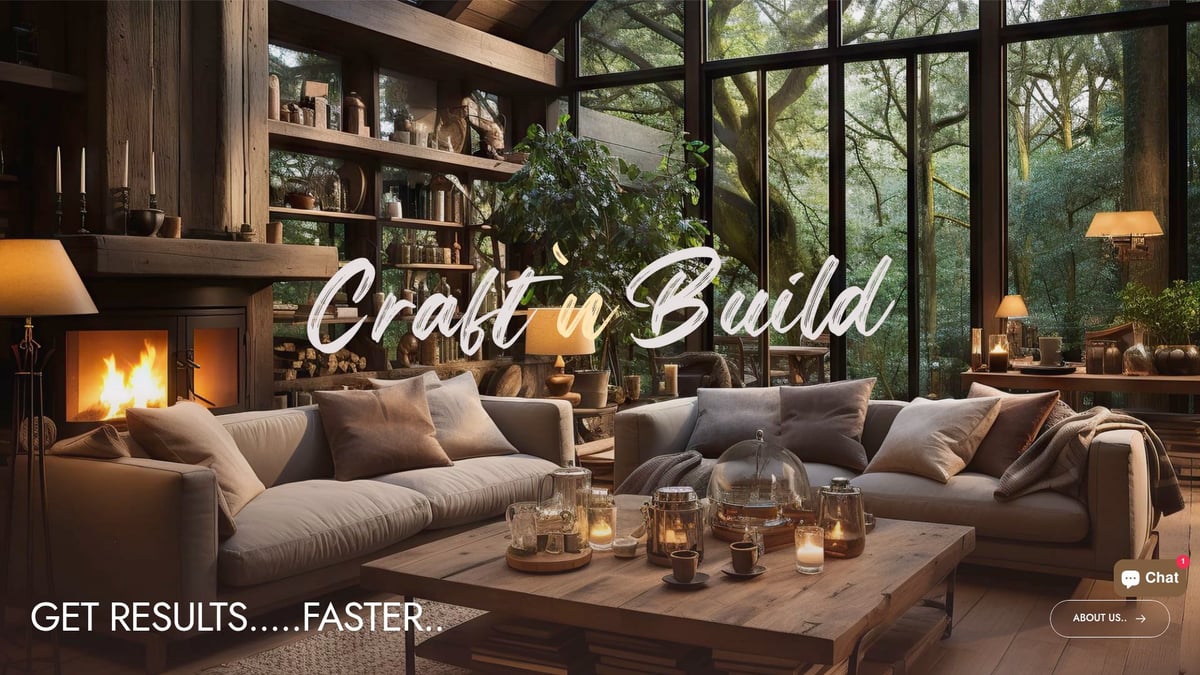
Die selbstgesteuerten Online-Kurse der Plattform decken wesentliche Fähigkeiten wie Moodboarding, Materialauswahl und praktische Designtechniken ab. Für Unternehmen und Fachleute umfassen maßgeschneiderte Dienstleistungen individuelle Lösungen, Beschaffung und Projektmanagement-Unterstützung.
Mitgliedschaftspläne schalten exklusive Ressourcen, Rabatte und eine unterstützende Gemeinschaft frei, wodurch Craft’n Build zu einem unschätzbaren Verbündeten für erfahrene Designer und Neulinge wird.
Expertentipps für erfolgreiche Interior Design Projekte
Exzellenz im Bereich Interior Design zu erreichen erfordert mehr als nur ein kreatives Auge. Erfolg entsteht durch sorgfältige Planung, fachkundiges Wissen und Aufmerksamkeit für Details in jeder Phase Ihres Projekts. Hier entdecken Sie umsetzbare Strategien und professionelle Einblicke, die Ihnen helfen, häufige Fallstricke zu vermeiden, Ihren Raum optimal zu nutzen, Ihre Innenräume zu personalisieren und sicherzustellen, dass Ihr Design über Jahre hinweg relevant bleibt.
Häufige Fehler, die vermieden werden sollten
Selbst der begeisterteste Hausbesitzer kann in klassische Fallen tappen, wenn er alles rund um Innenarchitektur lernt. Eine Überfüllung eines Raumes mit Möbeln ist ein häufiges Problem, das zu beengten, unbequemen Räumen führt. Die Bedeutung des Maßstabs zu ignorieren, kann zu übergroßen Sofas oder zu kleinen Teppichen führen, die das Gleichgewicht des Raumes stören.
Weitere Fehler sind das Vernachlässigen von geschichteter Beleuchtung, was zu harten oder dunklen Räumen führt, und das impulsive Wählen von Farbschemata ohne Berücksichtigung der Gesamtstimmung. Impulskäufe, insbesondere für Dekorationsartikel, können Harmonie und Funktionalität stören. Denken Sie daran, erfolgreicher Innenarchitektur geht es um kohärente Planung, nicht nur um das Sammeln schöner Objekte.
Maximierung kleiner Räume
Kleine Räume können sowohl stilvoll als auch hochfunktional sein, wenn Sie die richtigen Prinzipien aus allem rund um Innenarchitektur anwenden. Beginnen Sie mit der Auswahl von multifunktionalen Möbeln, wie Aufbewahrungs-Ottomane oder Schlafsofas, um die Nutzbarkeit zu maximieren. Vertikale Lösungen wie wandmontierte Regale oder hohe Bücherregale helfen, Bodenfläche freizumachen.
Verwenden Sie helle Farbpaletten, um den Bereich optisch zu erweitern, und platzieren Sie strategisch Spiegel, um das natürliche Licht zu reflektieren und Tiefe zu schaffen. Halten Sie Unordnung auf ein Minimum, indem Sie versteckten Stauraum nutzen. Jeder Zentimeter zählt, also konzentrieren Sie sich auf durchdachte Layouts und Stücke, die mehrere Zwecke erfüllen, um das Beste aus Ihrer kompakten Umgebung herauszuholen.
Personalisierung Ihres Raums
Personalisierung steht im Mittelpunkt von allem rund um Innenarchitektur. Bringen Sie Ihre Persönlichkeit ein, indem Sie einzigartige Kunstwerke, geschätzte Erbstücke oder individuelle DIY-Projekte präsentieren. Das Schichten von Texturen und das Mischen von Mustern kann Charakter hinzufügen, ohne den Raum zu überladen.
Kombinieren Sie aktuelle Trends mit zeitlosen Elementen für ein Design, das frisch, aber nicht vergänglich wirkt. Zur Inspiration, wie Experten die Zukunft der Personalisierung sehen, erkunden Sie Interior Designers Predict 15 Hottest Interior Design Trends in 2025, um zu sehen, wie Individualität in diesem Jahr Innenräume gestaltet. Denken Sie daran, die einprägsamsten Räume erzählen Ihre einzigartige Geschichte.
Arbeiten mit Fachleuten vs. DIY
Wenn Sie zwischen der Beauftragung eines Fachmanns oder einem DIY-Ansatz entscheiden, berücksichtigen Sie den Umfang Ihres Projekts und Ihre Vertrautheit mit allem rund um Innenarchitektur. Fachleute bringen Expertise in Raumplanung, Materialbeschaffung und Projektmanagement mit, was oft Zeit spart und kostspielige Fehler vermeidet.
DIY-Projekte können lohnend und kostengünstig für kleine Aktualisierungen sein, aber größere Renovierungen profitieren möglicherweise von fachkundiger Aufsicht. Wiegen Sie die Vor- und Nachteile sorgfältig ab, einschließlich potenzieller Kosten, Zeitpläne und des Werts professioneller Beratung gegen die persönliche Zufriedenheit durch praktische Beteiligung.
Budgetierung und kostensparende Strategien
Innerhalb des Budgets zu bleiben, ist für alles rund ums Innendesign entscheidend. Beginnen Sie damit, Investitionen in Bereiche mit der größten Wirkung zu priorisieren, wie auffällige Beleuchtung oder hochwertige Sitzgelegenheiten. Sparen Sie, indem Sie vorhandene Möbel aufwerten, Secondhand einkaufen oder einfache DIY-Verbesserungen vornehmen.
Die Recherche von Markttrends kann kluge Ausgabenentscheidungen unterstützen und zeigen, worauf Sie Ihre Ressourcen konzentrieren sollten. Der Interior Design Market Trends and Forecast Report 2025-2033 liefert wertvolle Einblicke in Branchenveränderungen und Kostenüberlegungen, die Ihnen bei der effektiven Planung helfen. Denken Sie daran, dass Kreativität oft am besten innerhalb klarer finanzieller Grenzen gedeiht.
Nachhaltige und gesunde Innenräume
Ein wichtiger Aspekt von allem rund ums Innendesign heute ist die Priorisierung von Nachhaltigkeit und Wohlbefinden. Wählen Sie ungiftige Farben, Materialien mit niedrigem VOC-Gehalt und Möbel aus erneuerbaren Ressourcen. Integrieren Sie Pflanzen und natürliches Licht, um die Raumluftqualität zu verbessern und die Stimmung zu heben.
Entscheiden Sie sich für Materialien wie Bambus, Kork oder recyceltes Metall für einen umweltfreundlichen Stil. Biophile Elemente, wie lebende Wände oder natürliche Fasern, fördern ein gesundes Umfeld. Diese Wahl unterstützt sowohl Ihr Wohlbefinden als auch den Planeten und macht Ihr Zuhause in jeder Hinsicht zu einem Rückzugsort.
Ihr Design zukunftssicher machen
Beim Beherrschen von allem rund ums Innendesign ist es wichtig, mit Blick auf die Zukunft zu gestalten. Flexible Räume, die sich an Lebensstiländerungen anpassen, wie modulare Möbel oder wandelbare Zimmer, sorgen für Langlebigkeit. Investieren Sie in hochwertige, langlebige Stücke, die Trends und täglicher Beanspruchung standhalten.
Berücksichtigen Sie die Integration von Technologie, wie intelligente Beleuchtung oder automatisierte Klimasteuerung, um Ihr Zuhause auf dem neuesten Stand zu halten. Durch zukunftssichere Gestaltung schaffen Sie Innenräume, die jahrelang funktional, schön und relevant bleiben und dauerhaften Wert und Zufriedenheit bieten.
Nachdem Sie die Entwicklung des Innendesigns, die wichtigsten Prinzipien und die neuesten Trends für 2025 erkundet haben, fragen Sie sich vielleicht, wie Sie diese Erkenntnisse selbstbewusst in die Praxis umsetzen können. Egal, ob Sie Ihren eigenen Raum auffrischen oder den ersten Schritt in eine professionelle Designkarriere machen möchten, die richtige Anleitung kann den entscheidenden Unterschied ausmachen. Wenn Sie bereit sind, das Gelernte in praktische Fähigkeiten und echte Ergebnisse zu verwandeln, empfehle ich Ihnen, mit Interior Design zu beginnen. Dieser Masterclass-Kurs ist darauf ausgelegt, Ihnen eine solide Grundlage zu schaffen und Ihre kreative Vision Schritt für Schritt zum Leben zu erwecken.




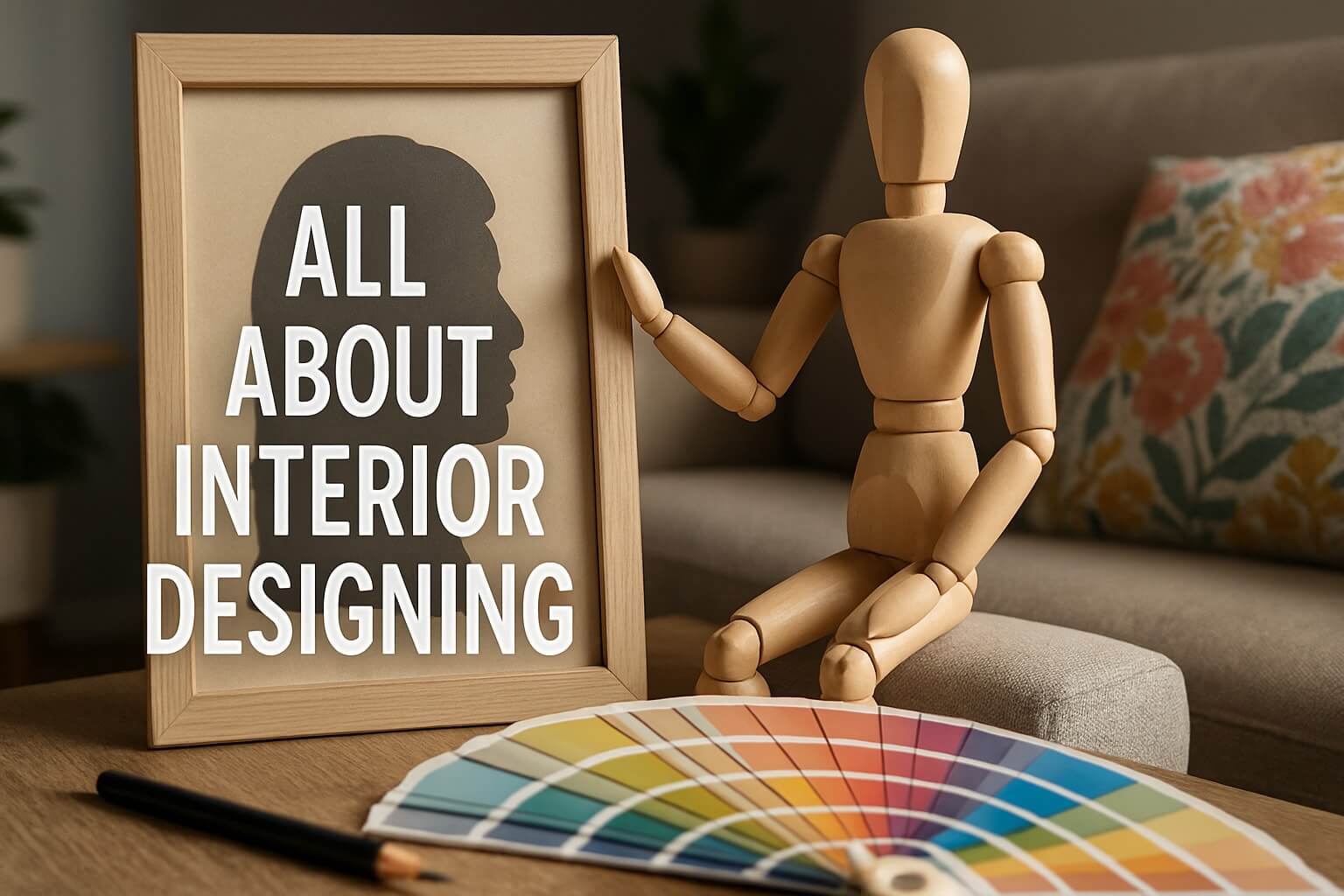
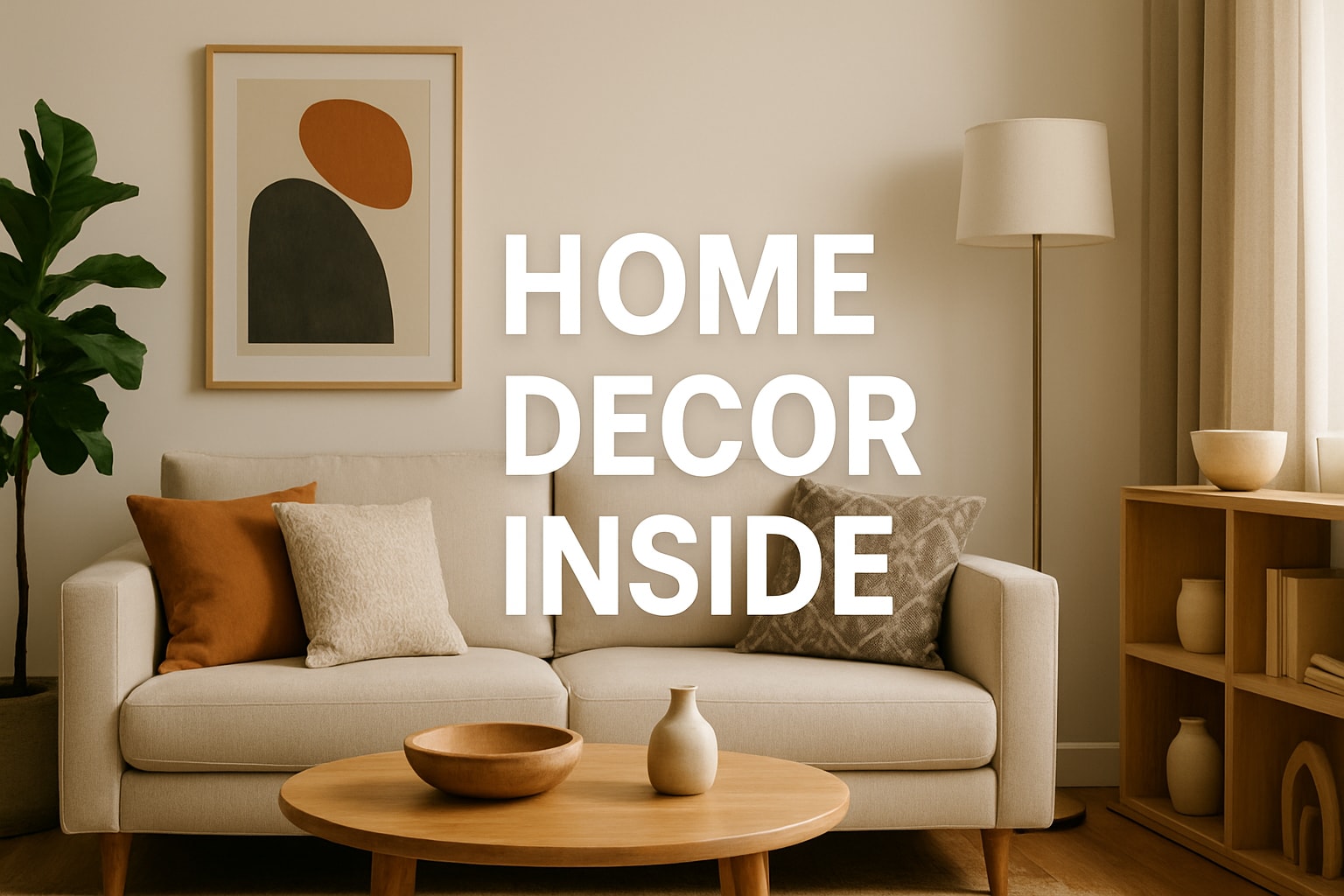
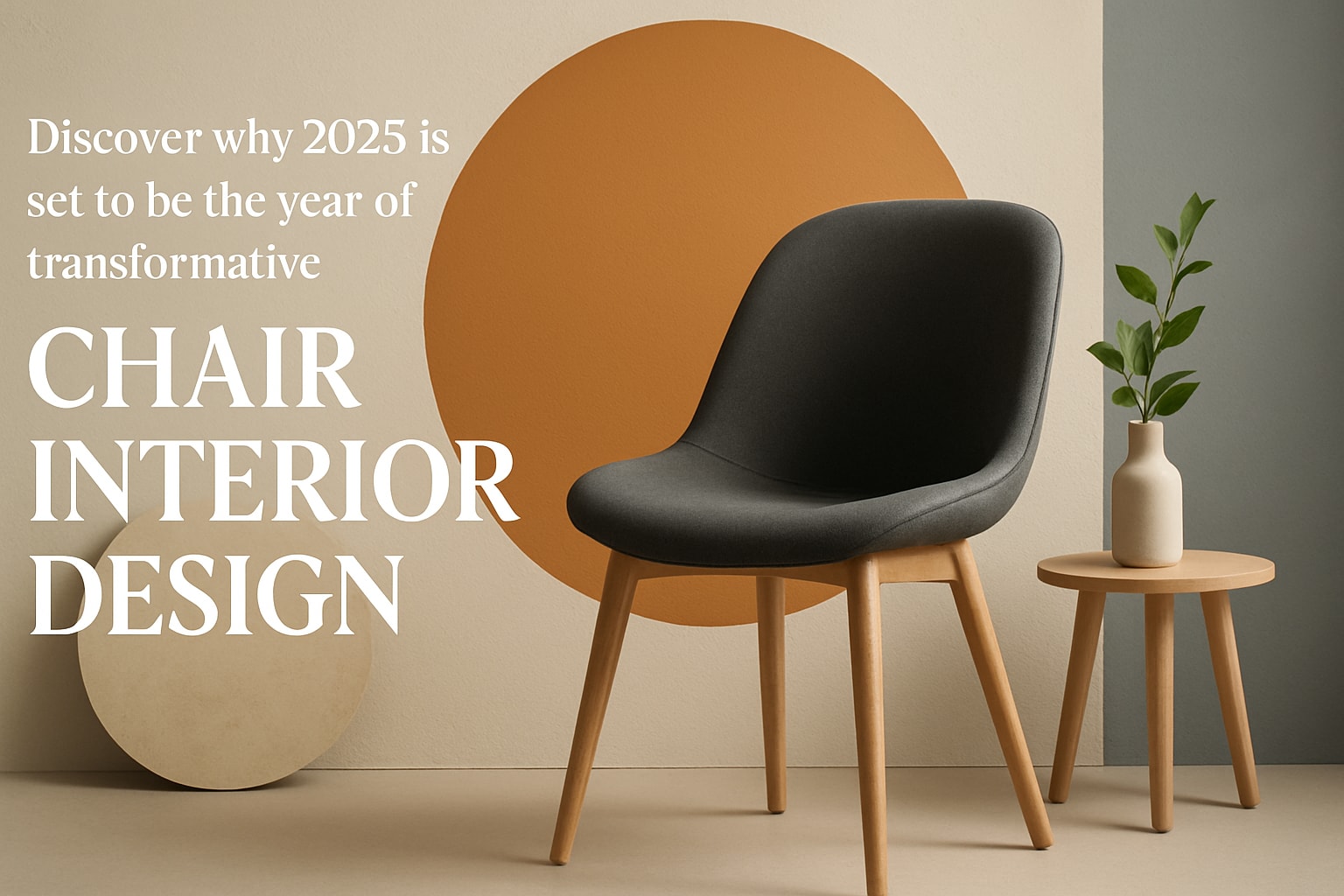
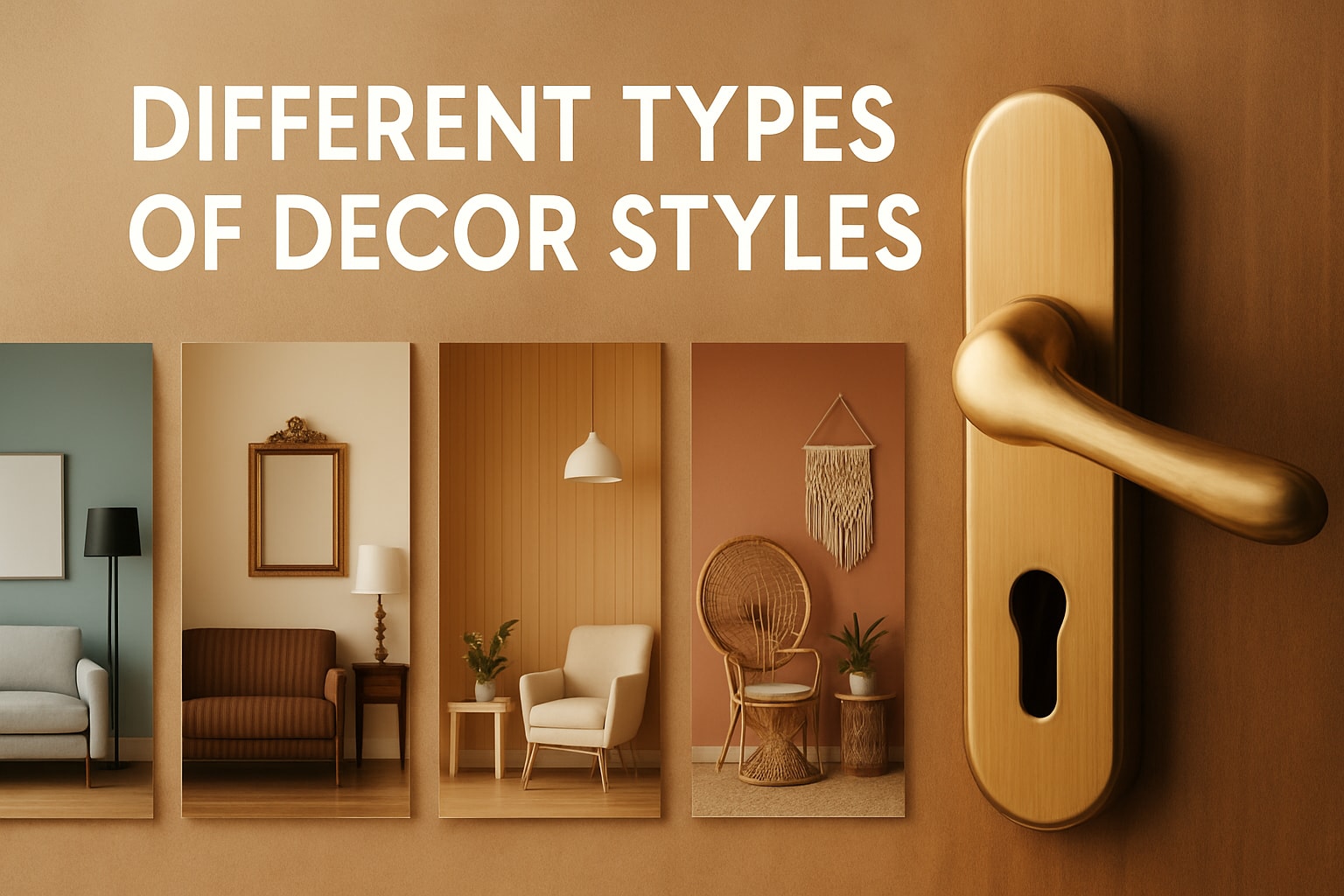
Aktie:
Wohntrends 2025 - Haus Design Dekor Leitfaden:
Entdeckung moderner Landhaus-Innenräume